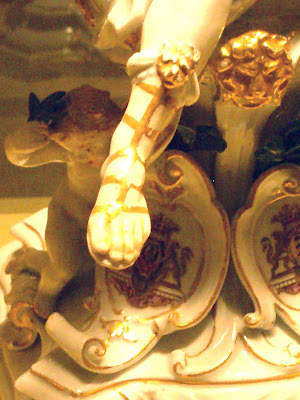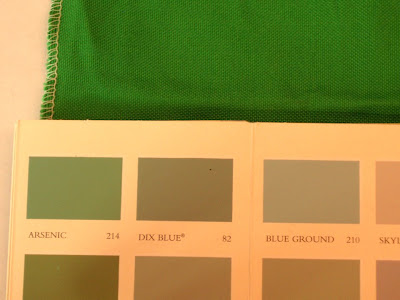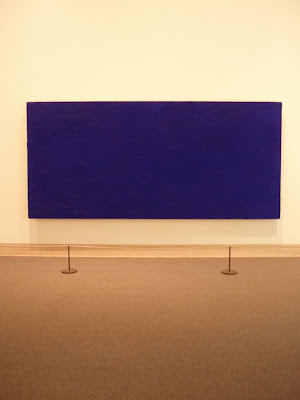Archive for
in the life of the interior designer.
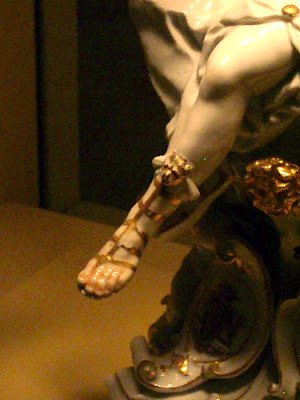
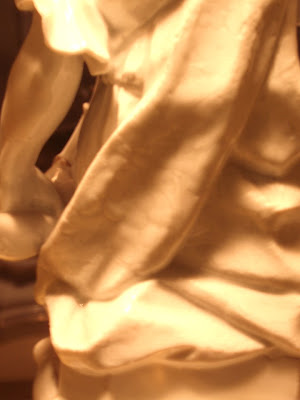
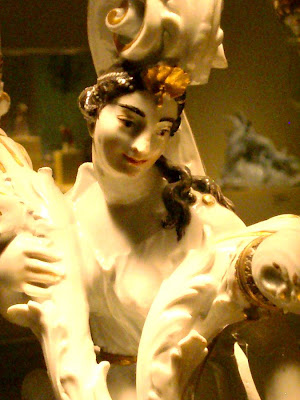
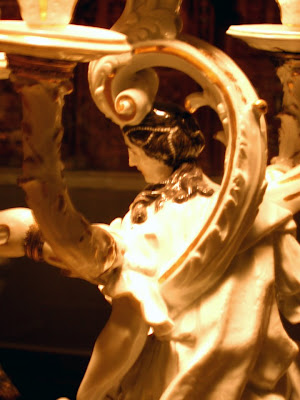
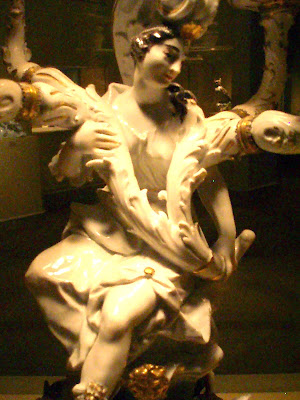
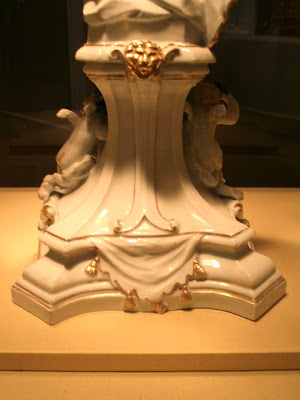
 Candelabrum, from a service made for Graf Alexander Joseph Sulkowsky (1695-1762) and his wife Marie Anne Franziska von Stain (1712-41) Hard paste porcelain. Model by Joseph Joachim Kandler (1706-1775) Meissen, 1736. This is my favorite Kandler piece. I first saw it at the MET in 2001. I took many pictures at the time; which I like to fixate on, pulling them out from the stacks of photos that one accumalates and carries from city to city and apartment to apartment. I had to have another visit on my last trip in NYC and I was not disappointed. There are just too many details to discuss.
Candelabrum, from a service made for Graf Alexander Joseph Sulkowsky (1695-1762) and his wife Marie Anne Franziska von Stain (1712-41) Hard paste porcelain. Model by Joseph Joachim Kandler (1706-1775) Meissen, 1736. This is my favorite Kandler piece. I first saw it at the MET in 2001. I took many pictures at the time; which I like to fixate on, pulling them out from the stacks of photos that one accumalates and carries from city to city and apartment to apartment. I had to have another visit on my last trip in NYC and I was not disappointed. There are just too many details to discuss. 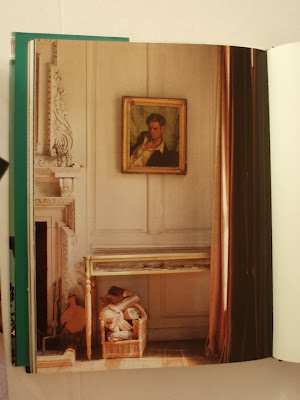 3.
3.
 4.
4.
 5.
5.
 6.
6.

7.
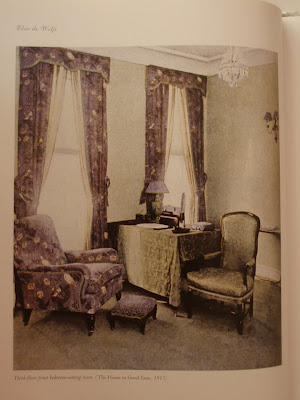
8.
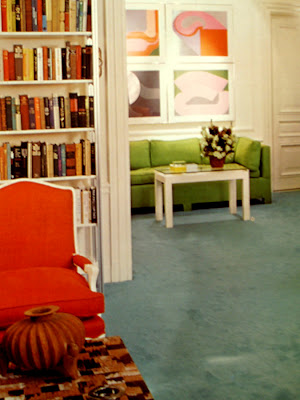 9.
9.

10.

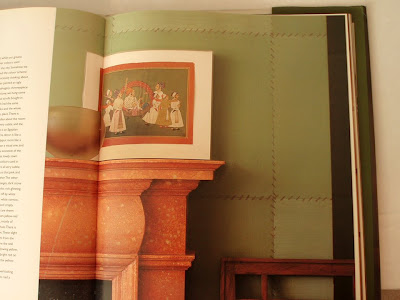
Of course, I’m not talking about Greene & Greene’s Gamble House nor even our ever ready eco friendly green. But just green, the color. I woke up this morning with the green beyond the chain link fence, in this case scaffolding, out my bedroom window. It still reflects the sunlight and of course a lovely counterpoint to the sky blue. I think Green Gartside of Scritti Politti once said that he took the name Green (to paraphrase) because he once woke up and that’s all he could see.
1. Farrow & Ball Arsenic my favorite color for the week–could be a fun play with Isaac Mizrahi’s “Extra silk” for S. Harris.
2. The dining room at Biddesden in Wiltshire. Lunch Green from from Farrow & Ball’s “Paint & Color in Decoration.” A must read for painting techniques & brushwork–something to study in our spray on orange peel on dry wall world.
3. Lutyens Green at Lindisfrane Castle, on Holy Island, also from P & C in D.
4. Teal greens in the mosaic work in Raymond Isidore’s, La Maison Pique-Assiette. Monsieur Isidore was for a while a caretaker of the Saint Cheron cemetery near Chartres. He began his life’s work embellishing his home and gardens in 1938 collecting bits of pottery and incorporating it into his interior–he completed it in 1962 then dying 2 years later.
5. I rip things out, this inspiration for my future country garden.
4. Teal greens in the mosaic work in Raymond Isidore’s, La Maison Pique-Assiette. Monsieur Isidore was for a while a caretaker of the Saint Cheron cemetery near Chartres. He began his life’s work embellishing his home and gardens in 1938 collecting bits of pottery and incorporating it into his interior–he completed it in 1962 then dying 2 years later.
5. I rip things out, this inspiration for my future country garden.
6. Rip out inspiration: subtle green on the walls with a dense arrangment of furniture.
7. The ever present, Elsie de Wolfe and her pale blue green walls and mauve printed chintz upolstery & curtains in her 1910 showhouse, 131 East 71st Street, NYC.
8. The brilliant green sofa in David Hicks’ Suite at the St. Regis.
9. The crisp white glazed chintz inner drape a wonderful contrast to the outer printed greens and the slightly more blue green of the side chair.
10. Ashley & Allegra Hicks’ country home. The green walls painted to look like sewn panels of leather. Further notice the floor in the kitchen which is a striped cherry and walnut veneer.
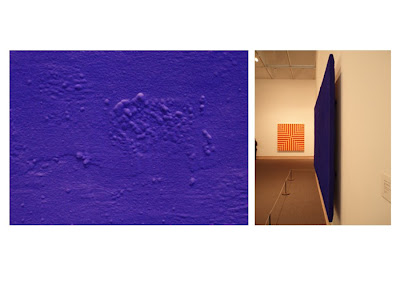
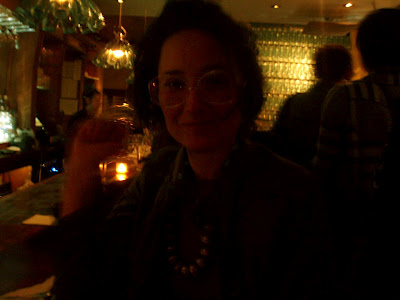


Having drinks with Isabella at Pravda and then seeing each other a second time at ICFF along with an early dinner at a very chic diner in midtown. Isabella said that her Reiki master told her she had rose energy. Isabella asked her what it meant and Reiki Master said, I don’t know. The Reiki Master says a lot of things like that to Isabella–only saying where one is on the map, but not why you are there, or what you could be doing– such is life.
Speaking of cartography, one of my favorite objects at ICFF were these wonderful globes from a Danish company, Atmosphere. I have a special affinity for globes as I like to look at where I am and where I am not; where I may like to go. The globes were the only thing at the show that made me smile with delight. (Back to ICFF later or as I like to call it, We are serious for design–what happen to the two i’s introspection and irreverence and perhaps a third, imagination?)
Martinis and Mussels at Bruxelles and then catching up with the forever fantastic Kadillac who has the most peaceful apartment on Bank Street that she loaned me for my stay while she was up at her most charming house in Colombia County–see her wearing found glasses on plastic turquoise necklace; just modeling.
Yves Klien’s, IKB 71 (California) at the MET (Note to Self: trademark color soon) and “NO PHOTOGRAPHY” i.e. Linda Carter’s Wonder Woman Costume & The Physical Impossibility of Death in the Mind of Someone Living & Jeff Koons; will post soon, and of course The Meissen.
The City Bakery has opened Birdbath-neighborhood green bakery. There are several locations, it will help you feel good about being a consumer and you can continue to make the world go round. I went to the one on 1st ave. The sesame banana bread had just come out of the oven.
Behind the scenes on Thursday with Rosemary & Jen to install the booth and of course I must add thanks to my lovely host and hostess Carl & Diana at the early part of my stay in Fort Greene.
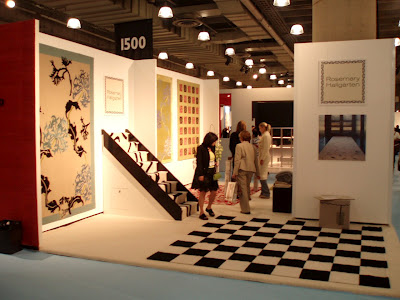

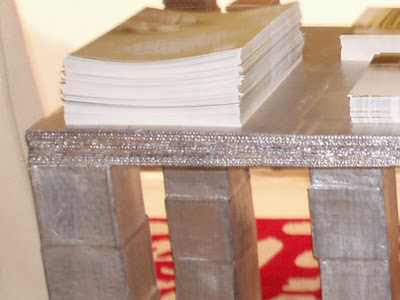 The workers are so loud this morning ripping off paneling and knocking odd bits from the corners of the apartment building (I think whoever designed this building 30 years ago was inspired by the Salk Institute and put paneling under the windows in some sort of weird homage and now they are trying to fix it) the vibrations, I thought, were going to knock off a Dorthy Thorpe glass from where it was perched on the window ledge right onto it’s pretty silver rim. I am now huddled in my hallway in the corner. I feel like as a kid during a tornado warning. You had to go to the basement and continue to try and do what you would normally do but in a place where you didn’t normally go.
The workers are so loud this morning ripping off paneling and knocking odd bits from the corners of the apartment building (I think whoever designed this building 30 years ago was inspired by the Salk Institute and put paneling under the windows in some sort of weird homage and now they are trying to fix it) the vibrations, I thought, were going to knock off a Dorthy Thorpe glass from where it was perched on the window ledge right onto it’s pretty silver rim. I am now huddled in my hallway in the corner. I feel like as a kid during a tornado warning. You had to go to the basement and continue to try and do what you would normally do but in a place where you didn’t normally go. An overview NYC trip to come. For now, images of Rosemary Hallgartan’s booth at ICFF with the Box Console in place. My absolute favorite was rug was the flat weave Glaze on the floor in fuchsia and cream of Rosemary’s design that she had made in Nepal.
Preview pic of ICFF which has opened today. I have been there for the install process at Rosemary Hallgarten’s booth 1661.
Drop by and see Rosemary’s hand crafted rugs as well as my Cardboard Console.
Dimensions: 48″ x 20″ x 36″ H
Found cardboard, gesso, paint, and aluminium leaf.
Portrait of a Lady; probably Mary Parsons, later Mrs Draper Lely, Peter (painter) c 1665. It’s unfortunate that the Fitzwilliam Museum does not show their paintings on line with frames.
Lion, FIGURE (one of a pair), 18th century (ca. 1732–35) Manufacured by Meissen, Factory; Johann Gottlieb Kirchner. What’s interesting about these are their size. And of course the expression.
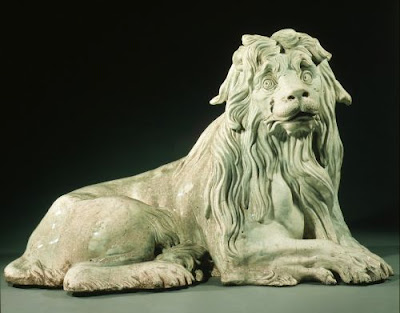
Commode, Jean-Pierre Latz, c.1745. I love the pattern melding of different materials.

What is the meaning of losing things?
My friend, the fabulous Isabella La Fitte–see the new sidebar listing– is a brilliant mother; to say the least, who I am looking forward to seeing next week. Hopefully, we will be able to meet up at one of our two favorite haunts. The Russian or The Belgian. If there are pictures from the Internet with this post, you will know I have not yet found my camera cable to download the fantastic pictures I have been taking. My camera itself I often lose. Just this week, I thought I left it at a friend’s in LA. Then I thought it must be at my brothers. It was eventually found in the glove compartment of my car–the cable has not yet turned up. I may have to ask Saint Anthony to assist me.
Sometimes when we lose an object we may stop and ask, What does this mean–where are my car keys? What am I forgetting? And, sometimes the pause, will cause the keys to present. Sometimes it takes more focus–I hang my keys on my turquoise chintz bulletin board but sometimes they do not end up there. So then, I get to ask to ask my favorite question, “What does it all mean?” A person can certainly be be guided by signs all day long if you hold that inclination. Just read Jane Bowles‘ biography, A Little Original Sin.
I have also lost the sizing adhesive for a project I am working on–two little brown bottles with white caps. I can clearly see myself taking them out of my black leather bag: (Comme de Garcon like this one but not stamped; just plain and black; I love it). And I see them sitting on a flat surface, but they have not yet turned up. I purchased the sizing on Wednesday. The guy who rang me up made a comment: Gold leaf adhesive.
Not a, Hey how’s it going? Or a, What’s up? Or a Did you find everything? etc. But, Gold leaf adhesive. I thought, “Is he making a subtle commentary on the difference between the fine arts and the decorative arts?”
On the one hand I do value the two separately. But I’m not sure if I place a higher value on one over the other. Value is controlled by many things. Just as the design world, decorative arts, and the art market is controlled by many variables. (But I will not attempt to comment further about this. However I imagine the art world akin to what happened in the 1700’s i.e. Tulip mania –I ascribe to the idea; rather than any detailed analysis).
Back to losing things. There are the psychological implications of things one loses and never gets back. Perhaps this is why the idea of losing anything can be trying–there is that moment of panic where one thinks, “I will never have this again!” And then if it is found a quick moment of relief.
Losing things. There is the event of losing a favorite object–or not being compensated appropriately for a favorite object, which I think is part of the huge interest in The Antiques Road Show. What if my soup tureen is worth alot of money and someone rips me off?
I always remember Bruce Chatwin’s book On The Black Hill. Adult twin brothers live in their family home in the Welsh countryside. They have a fear of antique pickers coming to their door.
I always remember Bruce Chatwin’s book On The Black Hill. Adult twin brothers live in their family home in the Welsh countryside. They have a fear of antique pickers coming to their door.
I once lost a Noguchi Hurricane dining table in my twenties to some dealer acquaintances. I took a very low price for it as I didn’t like it (over all too high for my chairs). I didn’t know what it was until later, but I did find it in the basement of an apartment building, so it all works out.
I purchased a mask this week. It’s intricately made out of peacock feathers. It’s horrifyingly ugly and fascinatingly beautiful at the same time. Not quite a hat but check out this link: BILL CUNNINGHAM.
Isabella is that you in the white shirt dress? I must start packing for my trip to NYC.


 If you are looking for some fantastic furniture art & accessories check out Penine Hart. She sends out a charming newsleter from time to time called, Stylish Dictionary. From Stylish Dictionary Vol VII “Shelter From the Storm.” She quotes: Home is a place to which one is attached by myriad habits of thought and behavior–culturally acquired, of course, yet in time they become so intimately woven into everyday existence that they seem primordial and the essence of one’s
If you are looking for some fantastic furniture art & accessories check out Penine Hart. She sends out a charming newsleter from time to time called, Stylish Dictionary. From Stylish Dictionary Vol VII “Shelter From the Storm.” She quotes: Home is a place to which one is attached by myriad habits of thought and behavior–culturally acquired, of course, yet in time they become so intimately woven into everyday existence that they seem primordial and the essence of one’sbeing. Yi-Fu Tuan, Escapism.
1. A view of Penine’s home
2. A painting by Lynn Umlauf featured in the May Vogue Index with Denise Porcaro of Flower Girl
3. Two paintings and a sculpture adorning the tastefully gorgeous country home of Darryl Carter, the cover story in May’s Elle Décor
4. A special feature on Jeanne Hedstrom’s dog portraits in the upcoming issue of House Beautiful
If you are in NYC check her out, Penine Hart Antiques & Art. Also, she’s going to have an exhibition of Jeanne Hedstrom’s dog portraits (I own one; Gidget) on Thursday, June 12 from 6 to 8 pm.

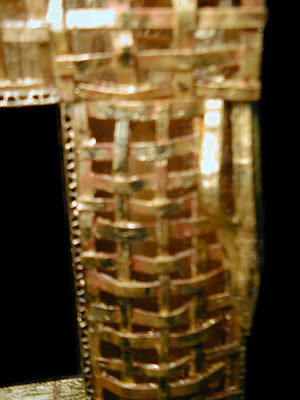

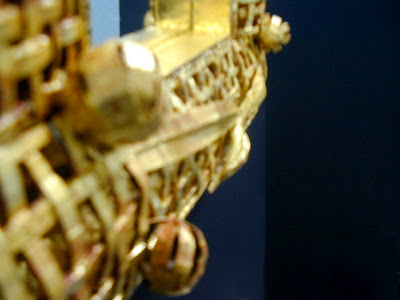 Cintamani is an Ottoman motif. The meaning of the motif is not certain. The word itself means jewel; perhaps it represents the third eye, evolving the point of one’s self-actualization.
Cintamani is an Ottoman motif. The meaning of the motif is not certain. The word itself means jewel; perhaps it represents the third eye, evolving the point of one’s self-actualization. This cardboard gilt frame was inspired by the cintamani motif which I developed inside of the larger context of Oracle. The Oracle has long fascinated me and it’s study presents the question, “Where is the Oracle of the 21st century?” Alas, there are no prophesies for the greater good these days. I would suggest:
1. We do not have a developed understanding for the need of ritual
2. If there were a true oracle, they would stay quiet.
Then there was the mirror. Our reflection seemed an appropriate arena for exploration inside of Oracle. You are the oracle. And, if you choose no, you may just sit and gaze and ask “Who is the fairest?”
Encyclopedia Mythica will expand: “In ancient Greece, the oracle was a place where these divinely-inspired prophesies of the future were passed down to mortals…To be an oracle, the place needed to have a variable and periodic attribute that could be subject to the interpretation of the priesthood. The priests would then ascribe both the event and the interpretation of the event to their patron god or goddess…the ancient oracles of Zeus were areas where priests could interpret the wind rustling through the trees…The most famous oracle was that of Apollo at Delphi, discovered as a fissure in the side of Mt. Parnassus emitting a gas that would cause seizures among the goats that grazed nearby…The Pythia was the priestess of this oracle who was crowned in laurel and seated on a tripod perched over the cleft that produced the intoxicating vapors. Her utterances while under the influence were usually so disjointed that additional clergy were needed to provide interpretation.”

